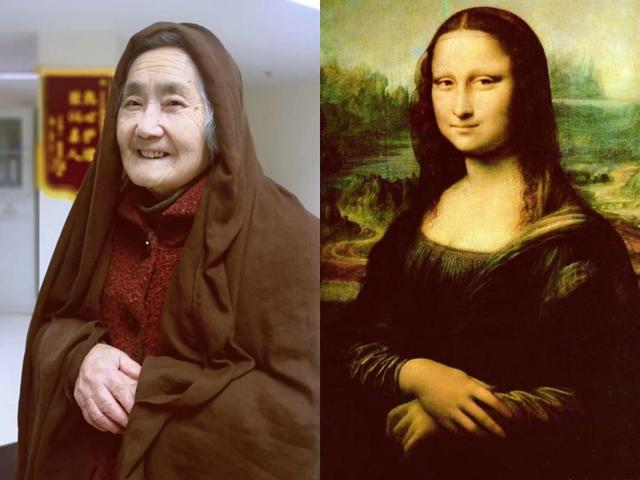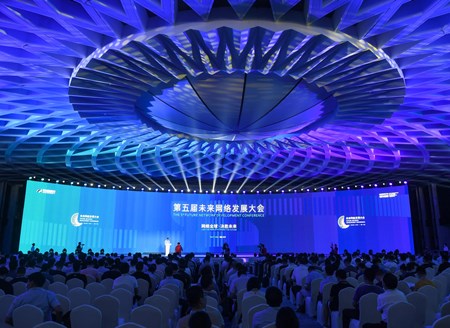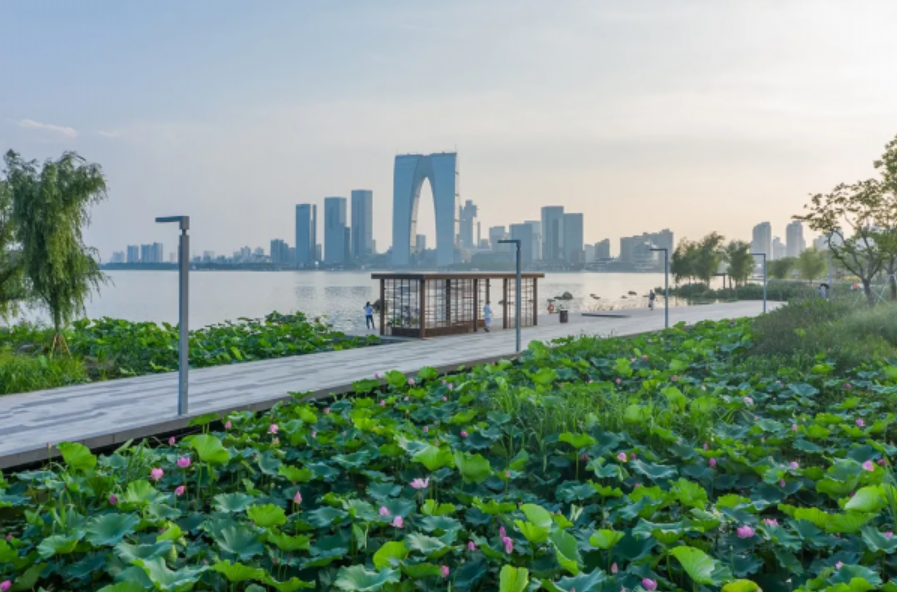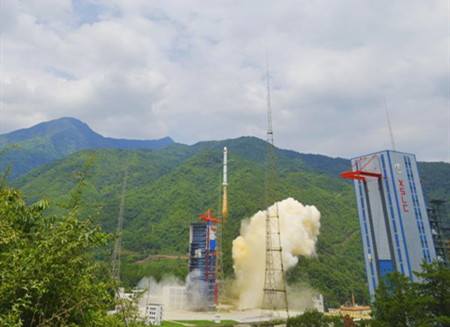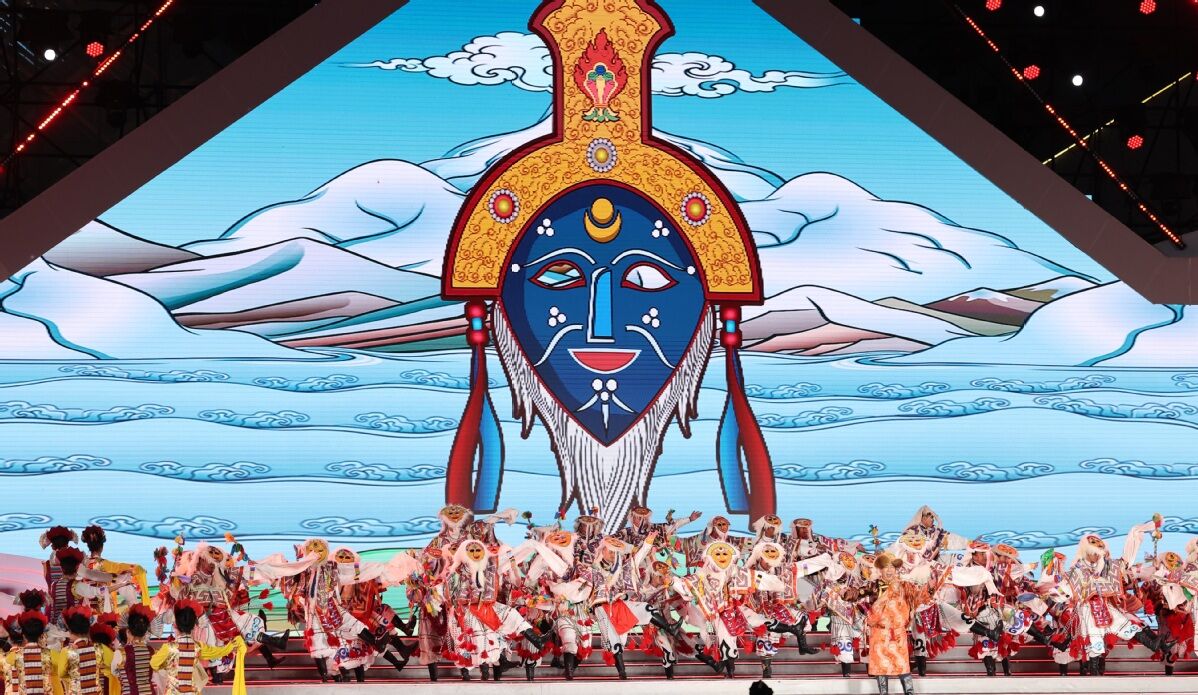
The 5th China Xizang Tourism and Culture Expo kicks off in Lhasa, the capital of Tibet autonomous region, on Friday evening. [Photo by Feng Yongbin/chinadaily.com.cn]
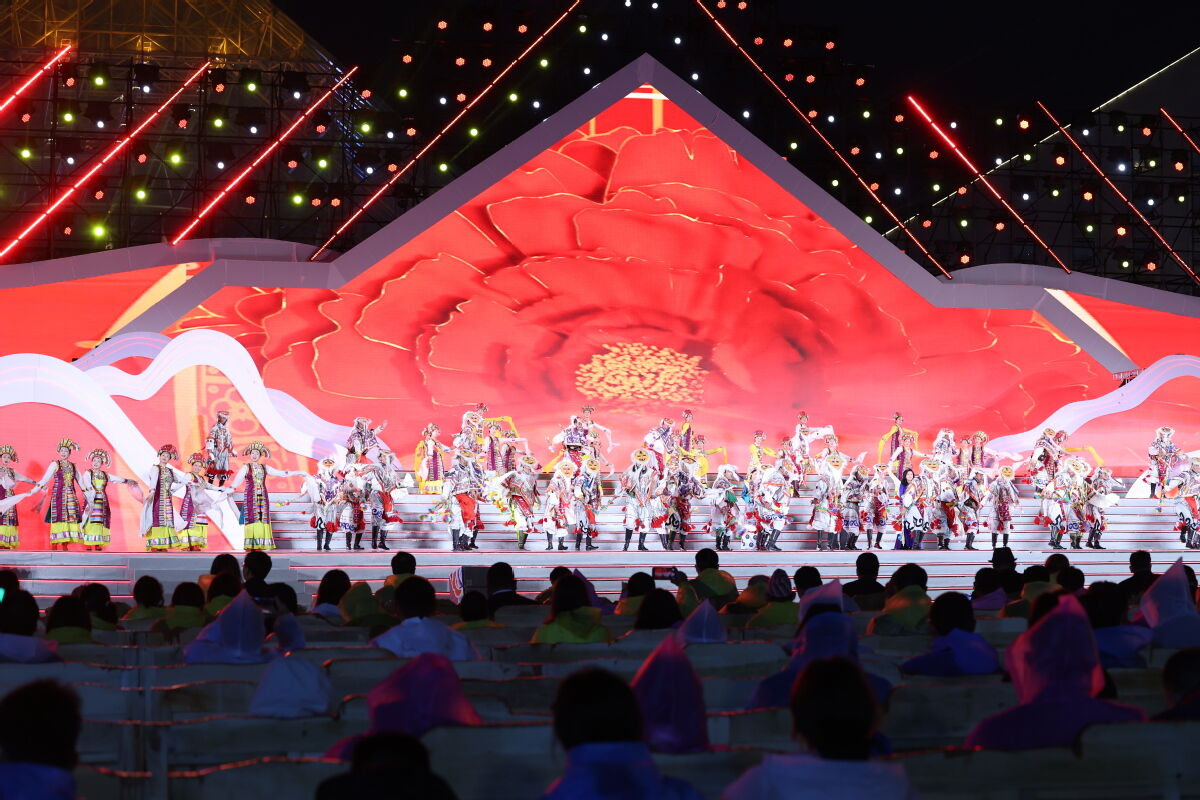
The 5th China Xizang Tourism and Culture Expo kicks off in Lhasa, the capital of Tibet autonomous region, on Friday evening. [Photo by Feng Yongbin/chinadaily.com.cn]
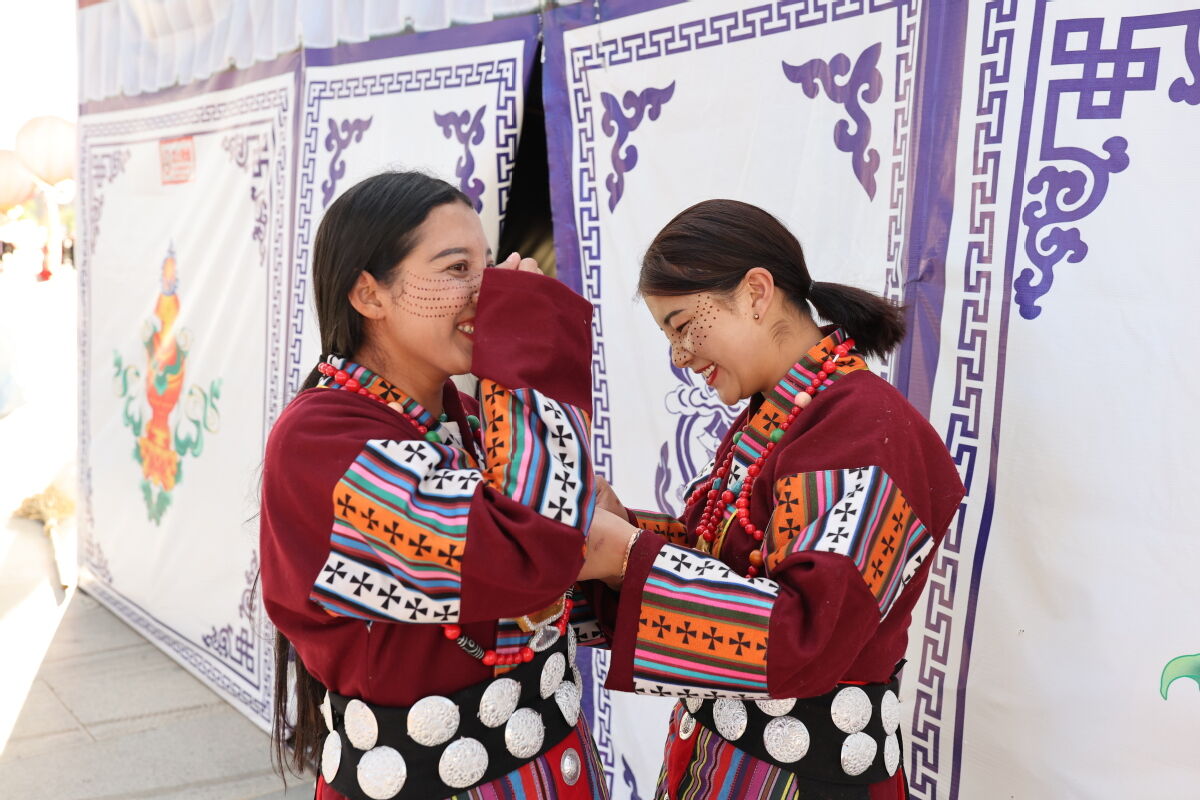
Tibetan performers dress up backstage ahead of the opening ceremony of the 5th China Xizang Tourism and Culture Expo, which kicked off in Lhasa, the capital of Tibet autonomous region, on Friday evening. [Photo by Feng Yongbin/chinadaily.com.cn]
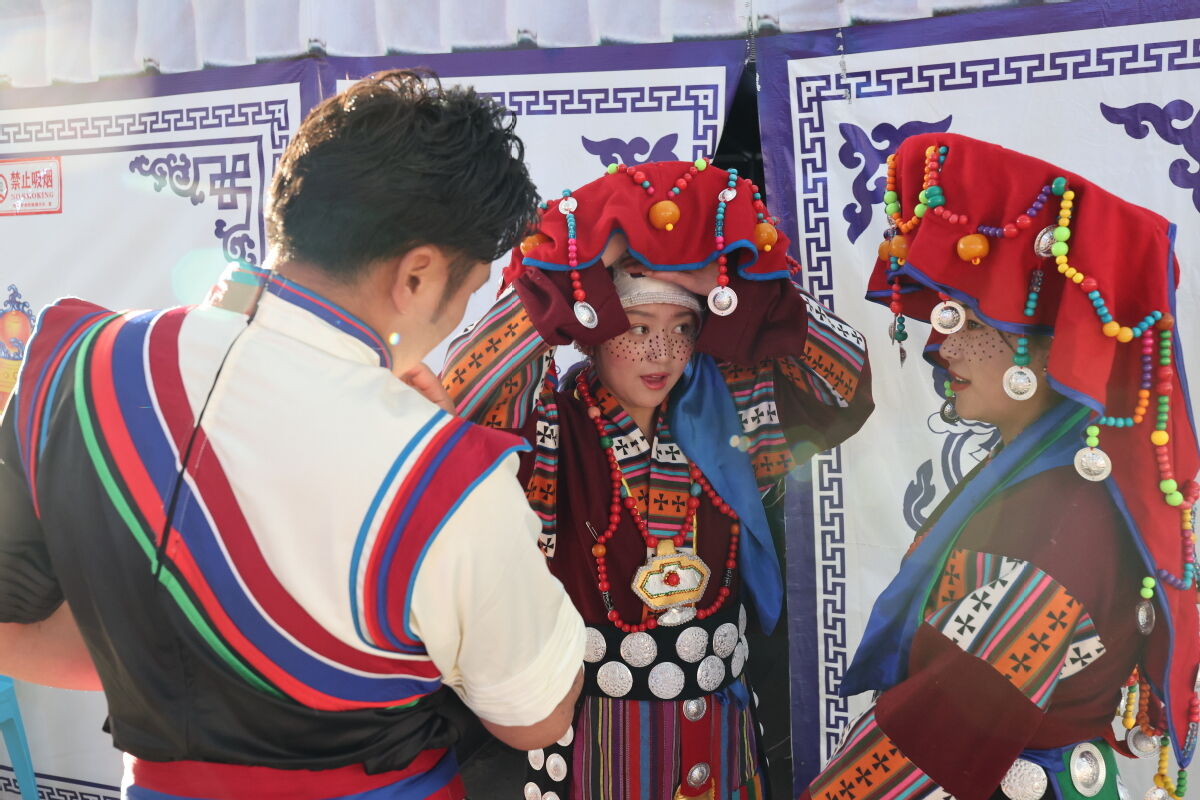
The 5th China Xizang Tourism and Culture Expo kicks off in Lhasa, the capital of Tibet autonomous region, on Friday evening. [Photo by Feng Yongbin/chinadaily.com.cn]
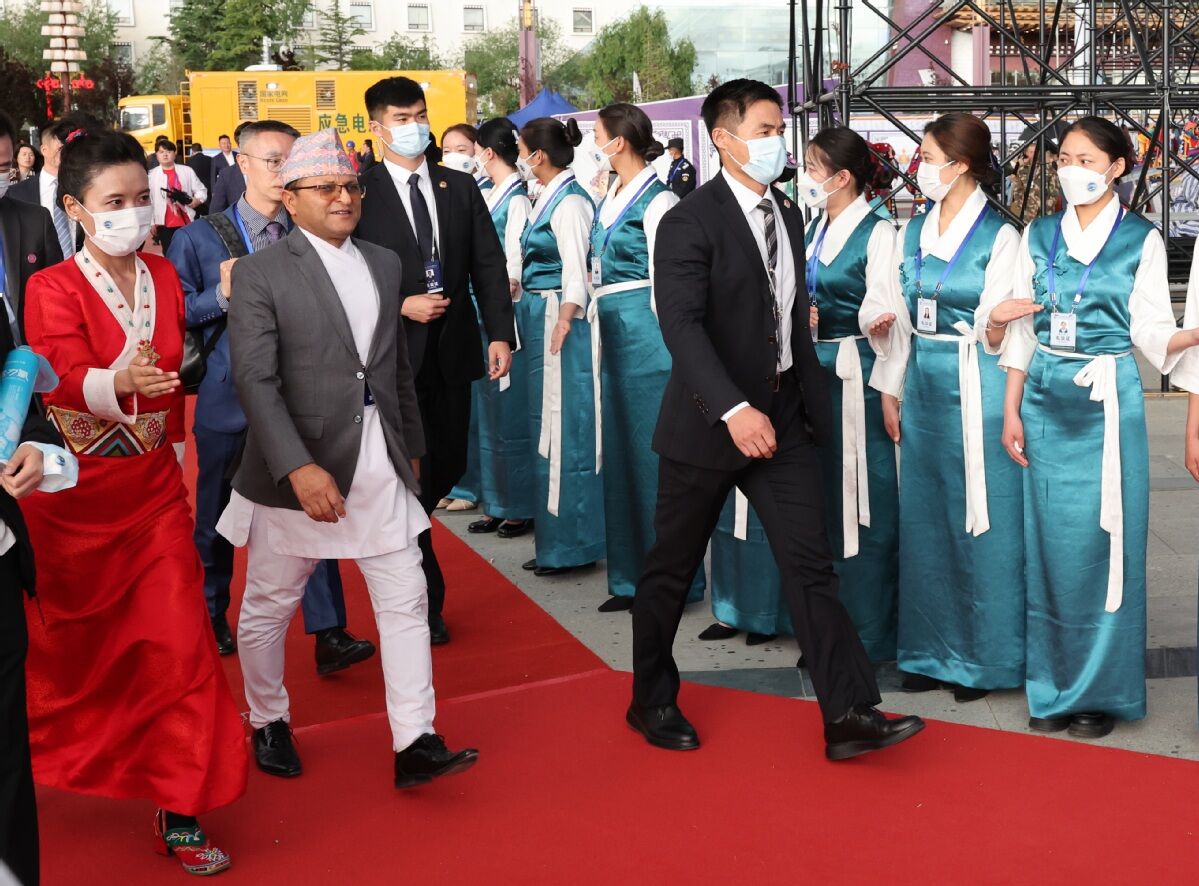
Guests attend the opening ceremony of the 5th China Xizang Tourism and Culture Expo, which kicked off in Lhasa, the capital of Tibet autonomous region, on Friday evening. [Photo by Feng Yongbin/chinadaily.com.cn]
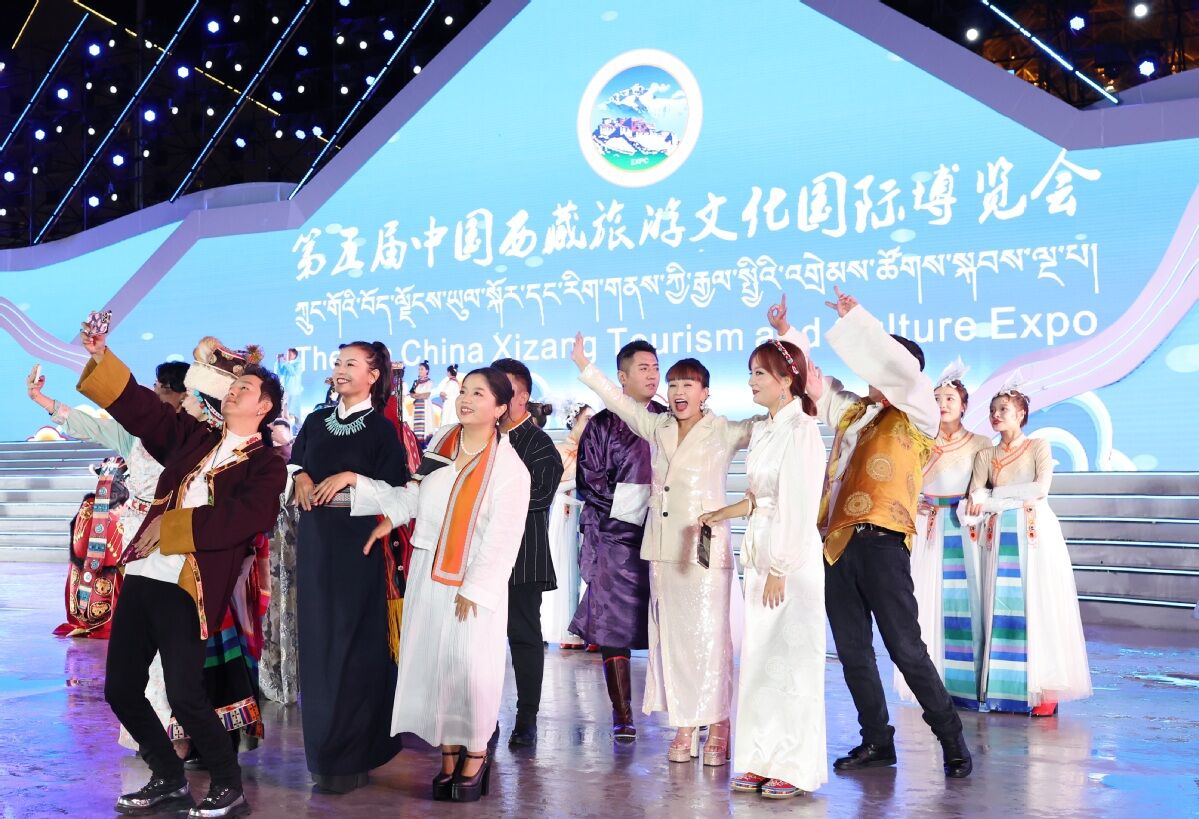
Performers pose for a group photo after the opening ceremony of the 5th China Xizang Tourism and Culture Expo, which kicked off in Lhasa, the capital of Tibet autonomous region, on Friday evening. [Photo by Feng Yongbin/chinadaily.com.cn]
The 5th China Xizang Tourism and Culture Expo kicked off in Lhasa, the capital of Tibet autonomous region, on Friday, showcasing the region's unique tourism and cultural resources while seeking more commercial and economic cooperation.
Altogether 612 domestic and overseas enterprises, including 75 companies from 12 countries such as Thailand, Cambodia, Nepal, and Bhutan, are participating in the event, said Chodar, deputy secretary-general of the regional government, in an earlier news conference on the 5th China Xizang Tourism and Culture Expo. Xizang is the Chinese name of Tibet.
Hosted by the Ministry of Tourism and Culture with the regional government of Tibet, various activities during the three-day expo on tourism and culture have been launched such as a keynote forum, an exhibition, a product sales exhibition, and a tourism marketing promotion conference.
Six more countries are participating in the expo compared with the previous one in 2018, and the exhibition is displaying nearly 10,000 products in 19 categories, including consumer electronics, handicrafts, and local specialties, said Chodar.
"Tibet is located in the hinterland of the Qinghai-Tibet plateau, it is a gateway to the Southwest border of China, and a key barrier of ecological safety, an important node of the Belt and Road Initiative, and an important opening pathway to the South Asia," Hu Heping, minister of culture and tourism, said while addressing the opening ceremony of the expo on Friday night.
Organized by the Information Office of the State Council, 20 journalists from 15 different media have also been invited to attend the event.
"This international tourism and cultural expo aims to build a professional and international exhibition platform to showcase the beauty of Tibet's ecology, culture, history, and the new achievements of socialism modernization of the region," said Hu, adding more people at home and abroad will get to better know, understand, and like Tibet via the expo.
Located in the southwestern part of China, Tibet neighbors the Xinjiang Uygur autonomous region, the provinces of Qinghai, Sichuan, and Yunnan. And it borders the countries of India, Nepal, Bhutan, and Myanmar.
With the average altitude topping 4,000 meters above sea level, the region had a permanent population of 3.64 million by the end of 2022, with the Tibetan and other ethnic groups accounting for more than 87 percent of the population, official statistics show.
The region's GDP exceeded 213 billion yuan ($30 million) in 2022, and the per capita disposable income of urban and rural residents reached 48,753 yuan and 18,209 yuan in 2022, respectively.
In 2022, Tibet received about 30 million domestic and foreign tourists, generating tourism revenue of about 40 billion yuan.

